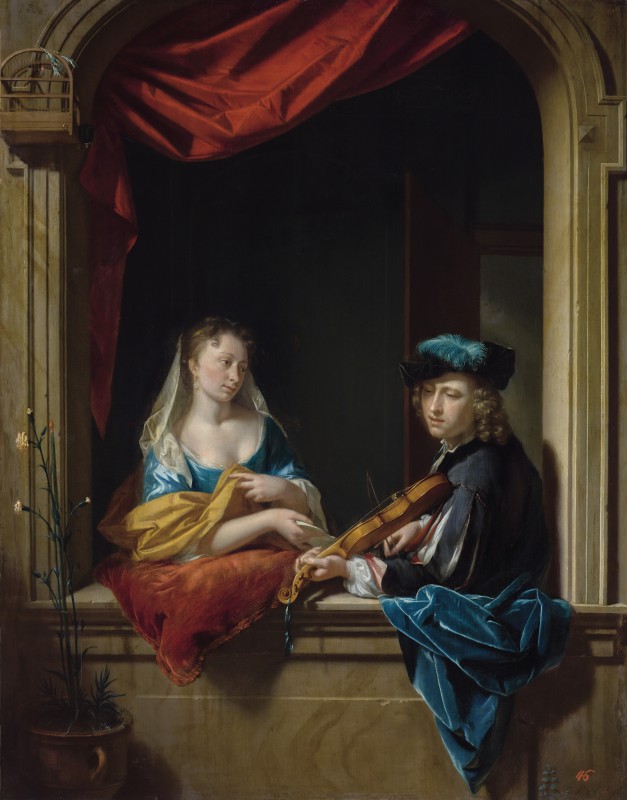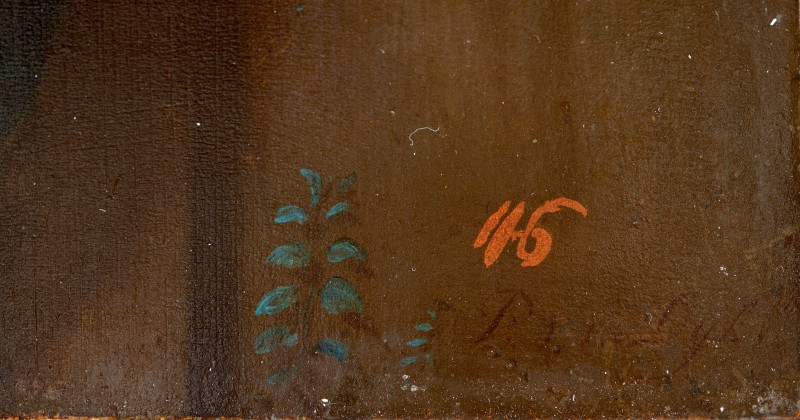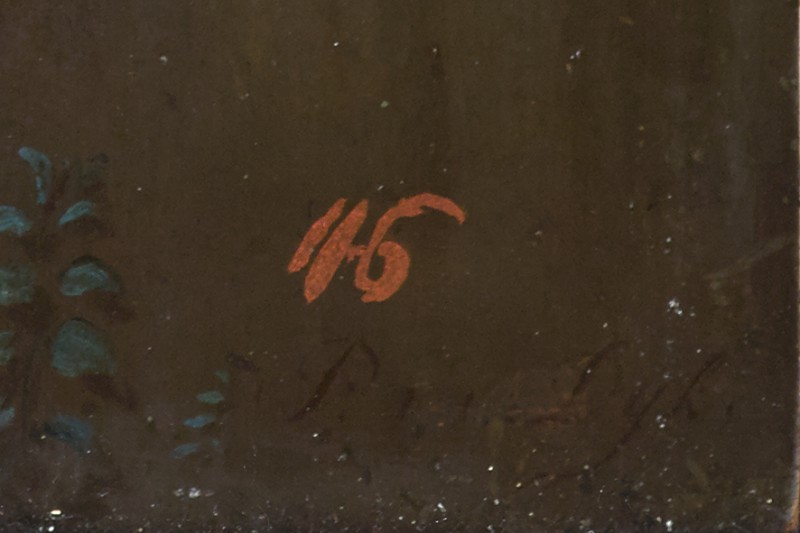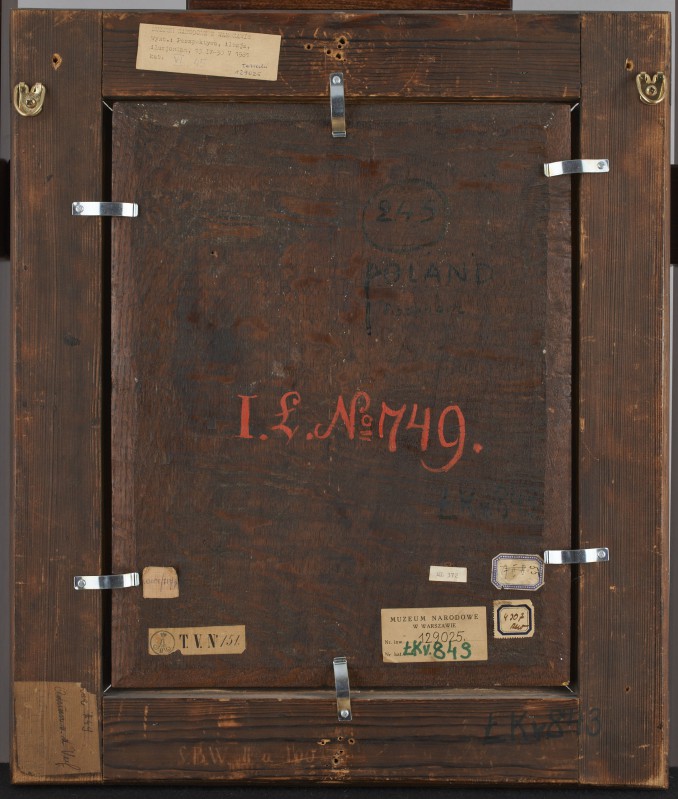Man Playing a Violin and a Woman at a Window
- Date
- 1st half of the 18th c.
- Object type
- painting
- Technique
- oil
- Material
- oak
- Dimensions
- 42,2 x 33,0 cm
- Acquisition date
- 1771
- Location
- The Palace on the Isle - Picture Gallery, ground floor
- Marks and inscriptions
- signed P. van Dyk., bottom right (barely legible); red number 46 of the Stanisław August collection, bottom right
- Place of Origin
- Netherlands (Europe)
- Owner
- The Royal Łazienki
- Museum number
- ŁKr 843
The painting was acquired for the Stanisław August collection by the art dealer, Adriaan van Aalst, at the posthumous sale of the Gerrit Braamcamp (d. 1771) collection. Braamcamp was both a patron and connoisseur, and in the 18th century his collection was considered one of the best in Europe. ...
In the Braamcamp sale catalogue, Man Playing a Violin and a Woman at a Window is described as painted by Philip van Dijk—in ‘the best manner of the master’. ...
Like many Dutch genre painters active in the first half of the 18th century, van Dijk painted decorative genre pictures based on a formula developed in the 1640s by Gerard Dou and popularized by his Leiden pupils and followers: the so-called nisstucks (niche-pieces) which show the figures framed within a window niche, painted in the smooth and meticulous technique of the fijnschilders (‘fine’ painters). In the Łazienki painting, van Dijk applied all the elements of this formula: the figures visible in the foreground shown waist-high, the textures of the objects and details rendered with a minuteness of touch, and the illusionistic effect achieved by the arrangement of the drapery and cushion on the window sill, and the position of the male figure whose hand seems to be suspended in the space before the viewer’s eyes. The subject of the painting—music-making—is also characteristic of the Leiden school, e.g. in images or self-portraits of the artists, for whom music is a source of inspiration in the creative process. [See D. Juszczak, H. Małachowicz, The Stanisław August Collection of Paintings at the Royal Łazienki. Catalogue, Royal Łazienki Museum, Warsaw 2016, no. 36, p. 155.]







